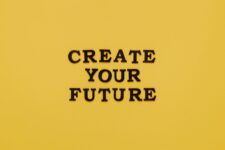As the New Year approaches, many of us naturally start reflecting on the past year’s accomplishments, challenges, and dreams yet unfulfilled. It’s a time for renewal. A chance to re-evaluate what truly makes us happy and to consider what changes could lead us toward greater fulfillment. For many professionals, this often means considering a career transition—a bold but empowering move to embrace a new path that aligns with personal and professional values.
If you’re ready to take that leap in 2025, this blog will help you reflect, plan, and land the job you love. It doesn’t matter whether you’re an executive looking for a fresh challenge, a mid-level professional who’s lost the spark, or someone considering a complete career transition. The insights here will guide you toward creating a career you’re excited about.
Reflect:
The first step in making a meaningful career transition is to reflect deeply on your current situation. This means asking yourself some key questions about your job satisfaction, accomplishments, and values. Take the time to sit down and think about these five key questions:
1. What moments at work brought me the most satisfaction this year? Consider the tasks, projects, or achievements that felt most rewarding. Were they tied to specific skills or types of interactions that energized you?
2. When did I feel the most disconnected or frustrated in my role? Identifying the low points is just as important. Look for patterns—is it the type of work, lack of growth, or something about the company culture that left you feeling drained?
3. Do I feel aligned with the mission and values of my current company? Reflect on whether your values align with the organization’s direction. Misalignment can often be a major reason behind career dissatisfaction.
4. What kind of work environment and culture do I thrive in? Think about whether you prefer working independently or in a collaborative team, or if you desire more flexibility. This will help clarify the type of career that would suit you best.
5. What skills or talents do I enjoy using the most, and are they being utilized in my current job? If your most fulfilling moments involve skills that aren’t central to your role, it may be time to consider a position that allows you to make full use of what you love doing.
These questions are designed to help you uncover the core aspects of your job that either bring joy or cause frustration. Understanding your motivations and pain points will give you the clarity needed to take the next steps in your career journey. If you’re looking for more structured guidance, my book, “Coach Yourself to a New Career”, offers in-depth exercises to facilitate this self-reflection.
Practical Reflection Exercise: Write Your Career Vision for 2025
Once you’ve answered the questions above, take your insights and craft a career vision statement for the year ahead. Picture yourself in your ideal job at the end of next year. What are you doing? Who are you working with? What kind of environment are you thriving in? Write down every detail. This exercise isn’t just about imagining a better future; it’s about setting a clear goal for what you’re working towards. Keeping your vision statement visible can be a powerful motivator, helping you stay on track even when challenges arise. Create a vision board and have some fun with this.
Plan: Break Your Career Change Into Simple Steps
A career transition can feel overwhelming, but breaking the process into smaller steps can make it more manageable:
1. Identify Skill Gaps: Assess whether there are new skills you need for your desired role. Online courses are a fantastic way to fill these gaps— LinkedIn Learning and Coursera provide courses designed to upgrade or reskill professionals for industry shifts.
2. Expand Your Network: Start reconnecting with old colleagues or reaching out to people in the industry you’re aiming to enter. Platforms like LinkedIn are invaluable for building relationships. Set a goal to connect with at least three new people each week, whether it’s through a simple message, a shared article, or participating in industry-specific LinkedIn groups.
3. Explore Job Opportunities: There are several high-quality job boards where you can explore new opportunities. For a comprehensive search, ZipRecruiter, Indeed, and Glassdoor are excellent resources. ZipRecruiter is particularly helpful for one-click applications, and Glassdoor offers valuable insight into company culture through employee reviews, helping you ensure that your new workplace will align with your values.
4. Use the Best Career Assessment Tests: If you’re unsure about how to navigate this change alone, consider using my Career Change Kit. It’s the ultimate resource for helping you gain clarity if you aren’t sure what you want to do next. The Career Change Kit includes the best career assessment tests in the world, designed to uncover your hidden talents, natural abilities, and passions. Over decades of coaching clients through career changes, I’ve seen time and again that the ideal career is one that matches your core values, passions, and natural abilities. This kit will guide you through discovering what truly drives you and give you the clarity you need to move forward with confidence.
Client Success: Courtney’s Career Transformation
To give you a better sense of how this process works, let me share a story. Courtney was a mid-level manager with an impressive corporate career, but each year she found herself feeling more disconnected. She wanted more than stability; she wanted fulfillment. Using the Career Change Kit, Courtney broke her goals into manageable steps. She began by reflecting on her core needs and discovered a passion for mentoring others. This realization led her to explore corporate coaching roles. After taking online certification courses and dedicating time to building her network, she successfully transitioned to become a leadership coach. Today, she has a career that energizes her—something that never happened in her previous roles.
Land a Job You Love
Reflecting and planning are vital, but the real change comes when you act and land the job you love. Here are some steps to help you secure that position:
Optimize Your Resume: Tailor your resume for each role you apply to by focusing on relevant experiences and skills. Make sure your resume speaks to the specific needs of the position. Tools like Jobscan can help ensure that your resume is optimized for ATS (Applicant Tracking Systems), increasing the chances of it being seen by recruiters.
Prepare for Interviews: Anticipate the types of questions you may be asked, especially around transferable skills and gaps in experience. Glassdoor has a great resource section that includes interview questions shared by people who have gone through similar processes. Be sure to prepare stories that show how your skills can transition smoothly into your new role.
Start with an Information Interview. If you haven’t been on an interview in a few years, don’t blow your best job opportunity. First, do a few informational interviews to learn more about the industry or field and get back in the swing of it.
Leverage Salary Tools: Before you accept an offer, it’s important to negotiate to ensure you’re paid what you deserve. Websites like Payscale and Glassdoor are fantastic for understanding the market value of your desired role. This will help you be confident during the negotiation process.
Believe in Yourself: The Courage to Make a Change
Change is not easy, and the fear of stepping away from comfort can be very real. However, sometimes staying in your comfort zone is why you don’t find fulfillment. Pursuing a career transition is an investment in your future happiness. Professionals like Courtney have transformed their lives by aligning their work with their deeper values. You can do it too.
If you need additional support in planning your next career steps, CareerOneStop is a comprehensive site sponsored by the U.S. Department of Labor. It offers resources like career assessments, resume guidance, and advice on exploring various industries.
Reflect, Plan, and Act Today
The New Year is a perfect opportunity to make a meaningful career transition. Use this quiet time of the year between Christmas and the New Year to reflect on the past and plan your next steps. You don’t have to do it alone. There are resources available to guide you, inspire you, and keep you on track.
This journey starts with believing in yourself. 2025 could be the year you pursue the career that excites and fulfills you—the one you truly love. Imagine ending next year not just with new skills or a different title, but with a genuine sense of fulfillment and alignment with your core values, passions, and natural abilities.







